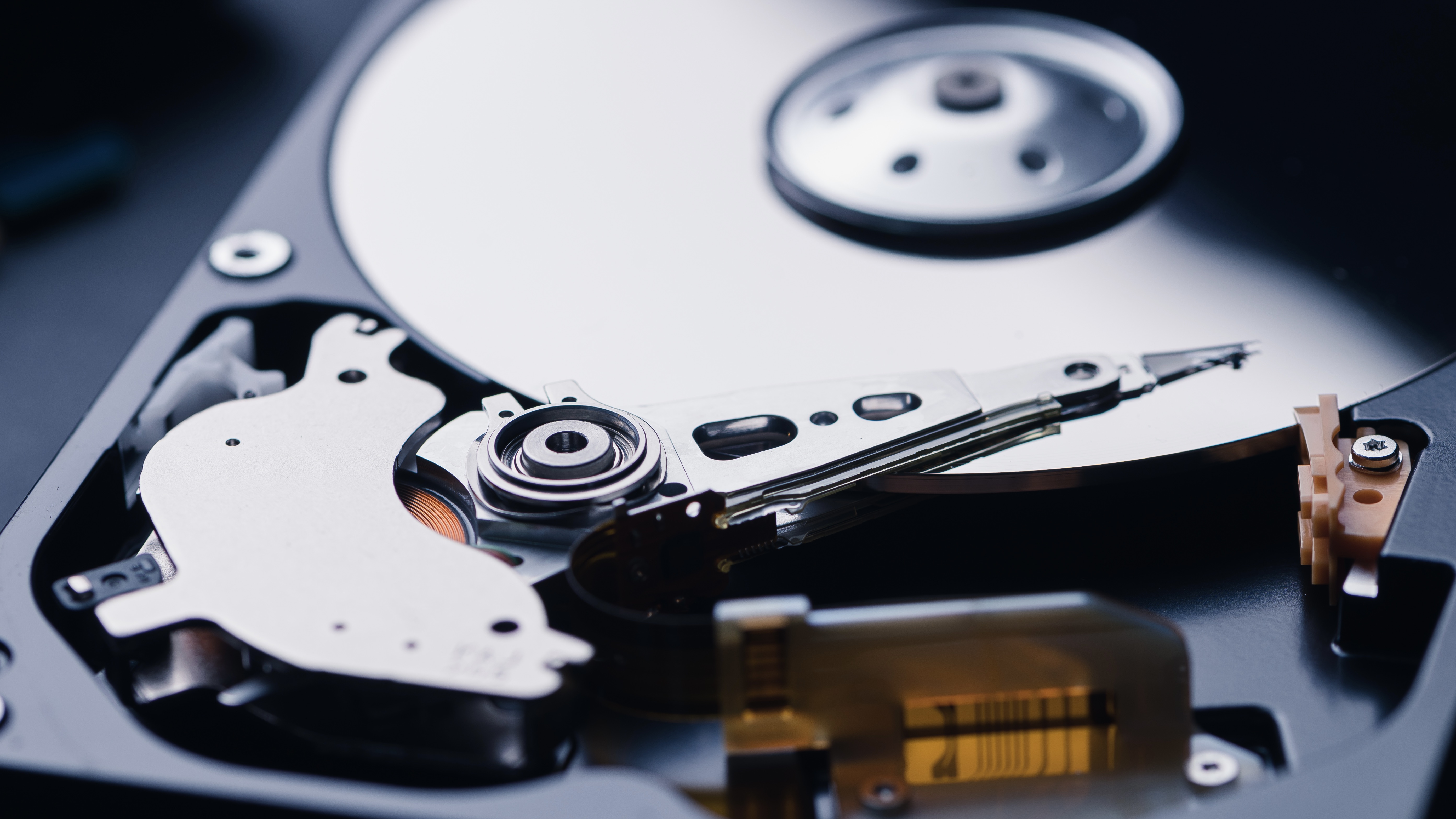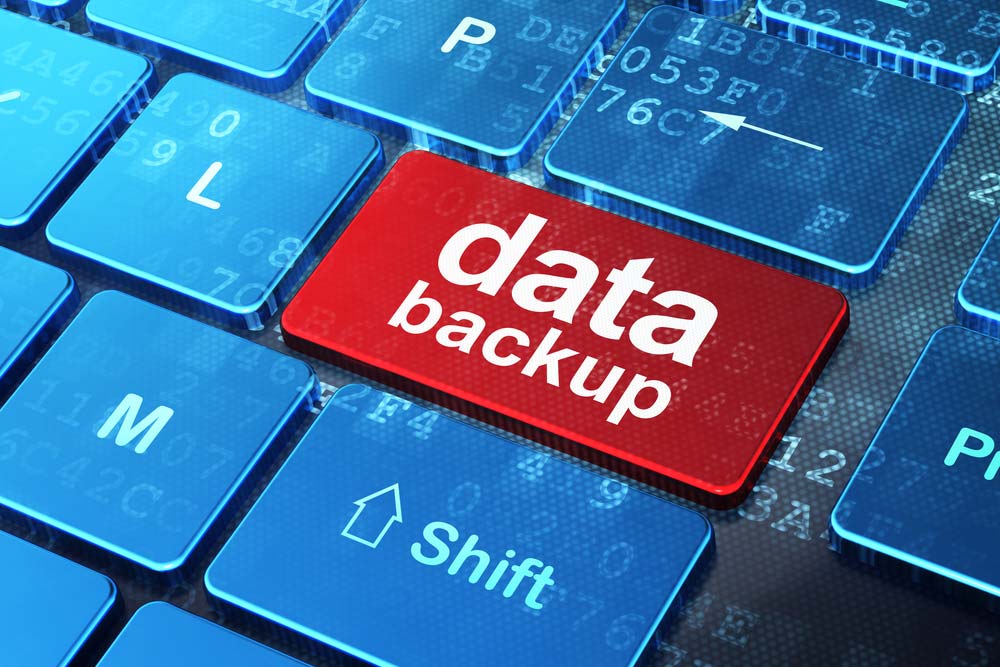How to choose the right storage medium for your organization’s backup strategy
Hard disks have been the go-to backup medium for decades, but are they heading for the scrap heap?


A comprehensive, reliable, and secure backup strategy is critical for all businesses. As storage media technologies have expanded, choosing the right backup platform has become more complicated. From tape to the cloud, companies must ensure they use the right technology to minimize data loss and platform obsolescence.
Using hard disks has been the foundation on which businesses have built their backup strategies for decades. However, cheap and plentiful hard disks could soon become a legacy backup technology according to Pure Storage, who have publicly stated hard disks will be dead by 2028, as high-capacity flash storage becomes just as affordable.
READ MORE

Of course, Pure is in the memory business. It’s continued to innovate, announcing its 75TB DFM (DirectFlash Module), which should be available in 2026 – with this technology projected to reach 300TB of storage capacity. This is a bold claim as current flash dives aren’t anywhere near that capacity at an affordable price.
Cost will be the guiding factor when it comes to ample capacity storage. Today, hard disks cost pennies per GB. If flash storage is to unseat spinning disks, a similar price point must be achieved – currently, the price differential is too large for most businesses to consider a wholesale shift to solid-state drives (SSDs).
What factors come into play when choosing the best storage medium?
When making decisions around backup, businesses must make several considerations, most notably failure rates. Last year, Backblaze revealed it experienced eight hard drive failures every day across its own hard disk-based storage services. Granted, this relates to an estate of over 230,000 drives, but this clearly illustrates that the longevity of hard disks may push businesses to consider alternative technologies.
Businesses are awash with data, with this information expanding exponentially. But all this data doesn’t need to be backed up. Data backups must assess the quality of the data and its value to the company.
Recovery Point Object (RPO) and Recovery Time Object (RTO) come into play as measures used to decide which data could be lost without strategic implications for the company, and how long a data recovery could take. A data audit is essential to identify these datasets and associated applications. With this information, a comprehensive data backup process can be created.
Sign up today and you will receive a free copy of our Future Focus 2025 report - the leading guidance on AI, cybersecurity and other IT challenges as per 700+ senior executives
An organization’s approach to data backup needs care, planning and deployment, says Stew Parkin, CTO of global Rubrik MSP Assured Data Protection. "With ever-growing change rates, data sizes, and data generation, the amount of data needed to be protected is growing, and growing such that traditional SATA or HDD just can't keep up.
“Of course, the advantages are around speed, but not just of ingest, in de-duplication rates, indexing speeds and other post-backup processes, and live-mount or instant restore I/O caching. Of course, all of this comes at a cost, modern backup solutions will enable data tiering as part of their solution so that only the most critical data resides on SSD.”
READ MORE

A clear driver to ensure backups are active and reliable is the expansion of ransomware. “All businesses need to pay more attention to their backup and recovery processes,” James Watts, managing director of Databarracks, tells ITPro.
“In our 2022 annual Data Health Check, only a third of respondents who experienced a cyberattack recovered from backups and didn’t pay up. The majority – two-thirds – did pay the ransom.”
RELATED RESOURCE

Learn about the three pathways that AWS customers consistently use to generate business value from modern applications
DOWNLOAD FOR FREE
Watts continues: “We've seen that continue this year, if not increase a little, from speaking with those in the industry. That's a concern for us because it suggests that organizations believe there's a lack of other viable avenues available in dealing with an attack. Paying the ransom only serves to fund the bad actors and incentivize further attacks.”
Comprehensive, robust, and secure data backups are an essential business tool that combats cyber threats and enables businesses to improve their resilience vastly. Recovering quickly from a data breach is just as important as having the right data backup infrastructure in place.
Should you choose just one, or a combination of storage formats?
Various backup formats have been developed over time, from tape to CD-ROM, but hard disks have remained the mainstay of on-prem and remote backup services. Most businesses will have a mix of backup technologies as one size does not fit all.
“20 years ago, online backup vendors were announcing that ‘tape is dead,’ Databarracks,’ Watts says. “It's 2023 now, and tape still isn't dead. Pure might make the HDD vs SSD argument, but tape is still the lowest-cost storage. The ‘cloud' isn't just HDD; the hyperscale cloud providers don't advertise it – or even confirm it – but their lowest cost, cold archive storage tiers, is almost certainly based on tape storage.
“It’s all a matter of scale,” Watts expands. “Tape has now been phased out in the majority of organizations that take advantage of the benefits of disk-based backup (speed, reliability, compatibility).
“But organizations with enormous data volumes to protect still seek whatever medium offers the lowest cost per GB, TB, or PB. Smaller organizations may move entirely to a single storage type – and they will be the first to adopt SSD entirely.”
READ MORE

Businesses are generally seeking a blended approach to data backup and recovery, adds Kunal Purohit, chief digital services officer of Tech Mahindra. “Businesses seek an all-encompassing data protection strategy based on current technologies and cloud advantages, including size, security, reliability, simplicity, and cost reduction. Modern data security systems can provide rapid data recovery with optimal application availability in the event of a disaster and can seamlessly integrate with the cloud.”
Jon Fielding, managing director, EMEA, Apricorn, meanwhile, points to a lack of automation and a general absence of comprehensive and applied data backup processes. "Our last survey found that while 90% of companies had been forced to turn to their backup system, only 27% were able to recover all of their information and documents. Compare that with the 45% that fully recovered their data last year, and it's clear we've actually gone backward in terms of the efficacy of our backup strategies and business resilience.”
Best practices for configuring your organization’s backup strategy
“I can comfortably say that backups, and more specifically immutable air-gapped backups, have never been a hotter topic or more in demand as they are today,” says Parkin. “That said, I think businesses are really struggling to decipher what it is that they need to pay attention to. The 'marketecture' has never been as prolific in the space as it is right now.”
From tape to SSDs – the media that a business chooses is just one component of its data backup strategy. Understanding the data quality and whether all data needs protection is vital. A hybrid approach is often taken with on-prem and cloud services to deliver a resilient backup and recovery environment.
Charly Batista, PostgreSQL Tech Lead at Percona, outlines some best practices when it comes to choosing the right storage format for your backup strategy – and configuring your strategy more broadly.
- Identify your critical data: Only some data is created equal, and we want to save time, effort, and money with irrelevant data that doesn’t need backing up. This should be documented and planned, as you may find data that you personally thought was less valuable is more critical in recovery.
- Create backup documentation: You should create and maintain thorough documentation of your backup strategy, including the databases and types of data being backed up, the backup schedule, and recovery procedures. This documentation should be updated and available to everyone involved with the database administration. You should also keep a paper copy offsite.
- Set up a regular backup schedule: Data changes constantly and finding a good regular schedule to back up that data is critical. Should you take this backup daily or weekly? The business continuity plan built on top of the specificities of the system or company handling the backups should determine the frequency and type of backup you carry out – from full system images to incremental or differential backups, but consistency is key here.
- Automate your backups: Alongside standardizing backups, you should automate the process as much as possible to make it more robust and reliable and minimize the possibility of errors.
- Create multiple copies: We used to say, “who has two has one, and who has one has none”. Having multiple backup copies on different sites makes the recovery process faster. Having one copy close to the compromised instance and another version further away is more reliable, as it will protect against natural disasters and attacks.
- Use diverse storage media: This goes together with having multiple copies. You should have copies in a combination of multiple media formats to improve redundancy and reliability. For example, if you are running in the cloud, you may want to run a cloud backup and a second backup to another location.
- Establish powerful encryption: A good encryption strategy will help to keep data secure during transmission and storage. This is mandatory when storing backups offsite or in a cloud environment. Remember that hard drivers will fail; we need to know how the providers dispose of them.
- Test, test, test, and test: I can’t stress how important it is to test the backups and ensure they’re reliable and recoverable. You must regularly test the whole restoration process to ensure your backups are functioning correctly and your process is up-to-date and accurate. Don't wait until a disaster to discover that your backups are corrupted, or your backup process is faulty.
David Howell is a freelance writer, journalist, broadcaster and content creator helping enterprises communicate.
Focussing on business and technology, he has a particular interest in how enterprises are using technology to connect with their customers using AI, VR and mobile innovation.
His work over the past 30 years has appeared in the national press and a diverse range of business and technology publications. You can follow David on LinkedIn.
